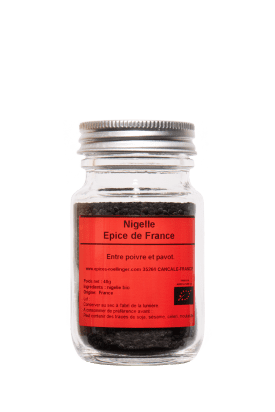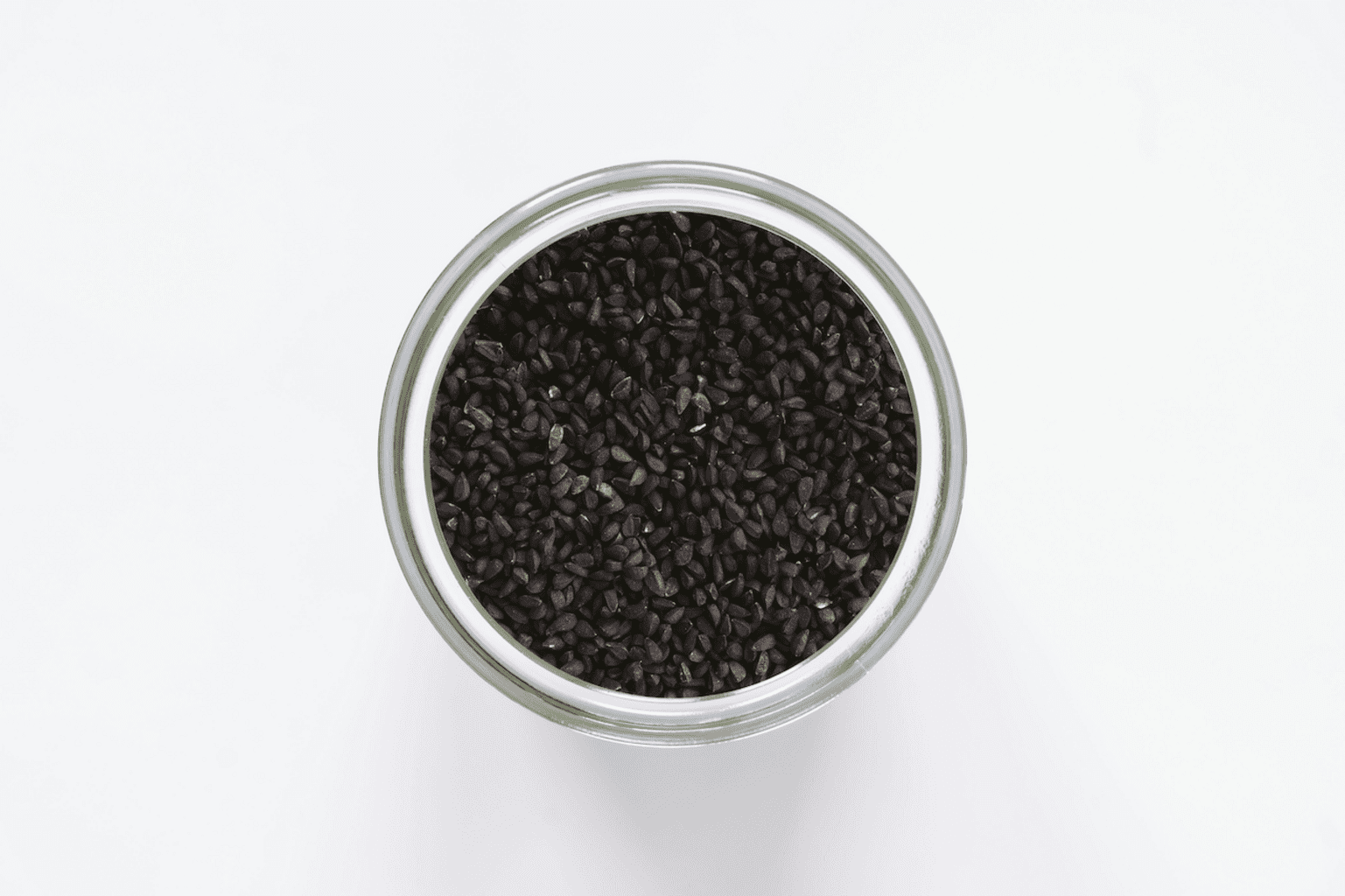Nigella

Ingredients: Nigella
Similar to both pepper and poppy seeds.
€8.60
50 g
Recommendations
Nigella seeds bring out the natural flavors of beans and other legumes and can be used to season breads. The seeds can also be toasted. Use sparingly.
-
Allergens
Absent, except for cross-contamination.
May contain traces of sesame, celery, mustard, soy. - Origin Egypte or France
- Storage / Use In a cool, dark, dry place.
€172 / kg
Olivier Rœllinger's words
I like to use these mild peppers in rice dishes and to season delicately-flavored vegetables like zucchini, eggplant, winter squash, and artichokes. It also goes well in an everyday vinaigrette. The grains can be cooked in oil to enhance their flavor, then added to lentil and bean dishes. This is a subtle, slightly bitter spice.
Story
There are several different types of nigella seeds : black cumin (Nigella sativa) and nigella Damascus ( Nigella damascena). The blue ranunculus flowers found throughout gardens in the Middle East, Asia, and Europe are nigella Damascus. They are sometimes called "poivrette" (little pepper).
Wild nigella is native to the Middle East and nigella seeds were found in King Tut’s tomb in Egypt. It is also present in Turkey, Syria and Iraq.
Nigella seeds are one of the ingredients used in the Indian spice blend panch phoron. Pliny the Elder praised them as a bread seasoning almost 2,000 years ago and indeed, they are delicious in breads. Up until the 16h century, nigella seeds were the only spice used to add heat to dishes. Until then, true peppercorns (piper nigrum) were extremely rare and very expensive.
Wild nigella is native to the Middle East and nigella seeds were found in King Tut’s tomb in Egypt. It is also present in Turkey, Syria and Iraq.
Nigella seeds are one of the ingredients used in the Indian spice blend panch phoron. Pliny the Elder praised them as a bread seasoning almost 2,000 years ago and indeed, they are delicious in breads. Up until the 16h century, nigella seeds were the only spice used to add heat to dishes. Until then, true peppercorns (piper nigrum) were extremely rare and very expensive.
